The Smith Optics Ignite MIPS helmet combines a streamlined shape with some of the latest safety-enhancing features (Koroyd and MIPS), to produce a helmet that slips through the wind efficiently without compromising protection.
In use, the Ignite MIPS feels supremely comfortable on the head, and the additional safety features provide reassurance that your head (and brain) is more likely to be well protected in the event of a crash.
However, minimal ventilation means it’s best suited to use on cooler days and the glasses storage zone didn’t play nicely with my collection of non-Smith Optics cycling sunglasses.
Smith Optics Ignite MIPS helmet specification and details
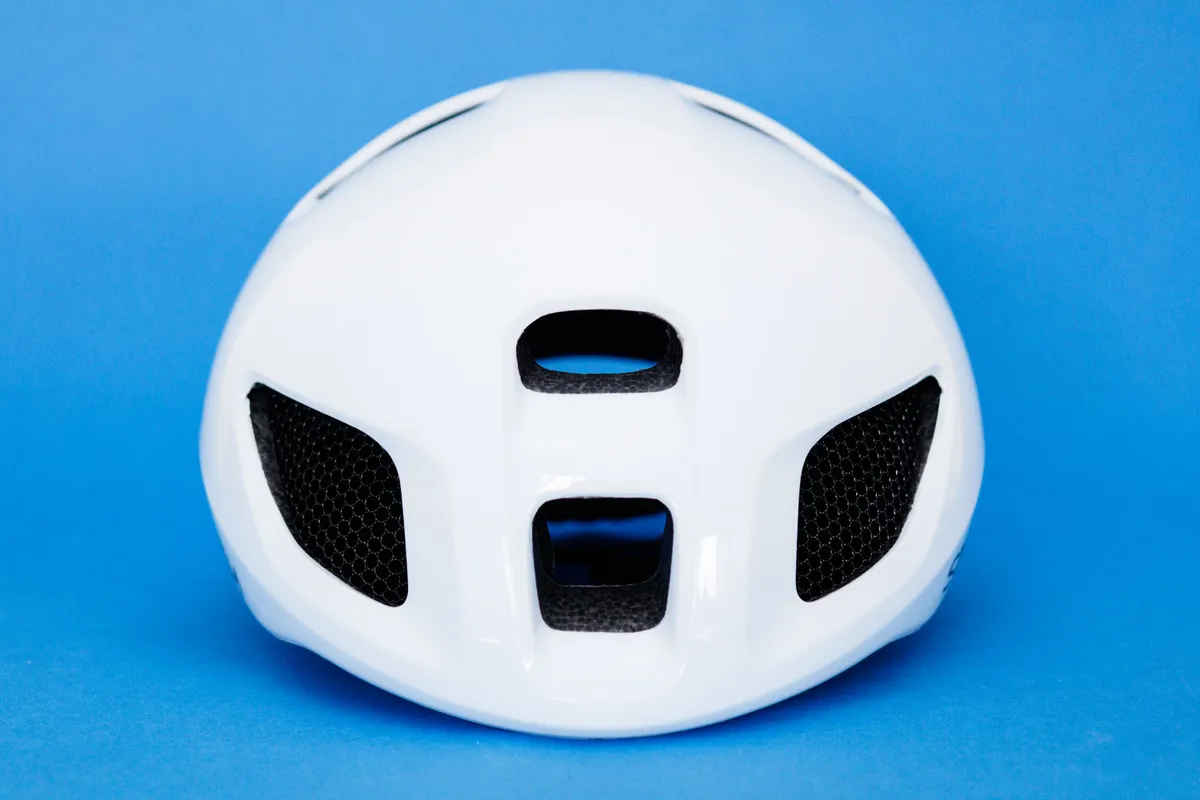
On the scales, my white, size-medium Ignite MIPS weighs 281g.
That’s 29g less than the claimed weight of 310g, and is competitive with the current crop of high-end aero road helmets.
A Specialized Evade 3 (£275 / $300), for example, weighs 272g, while Giro’s Eclipse Spherical (£239.99 / $250) weighs 277g, and a Lazer Vento KinetiCore (£249.99 / $299.99) is claimed to weigh 290g.
The Ignite MIPS is available in six colours and three sizes (S, M and L).
At £229 / $250, it's cheaper than many of its competitors, though perhaps not by enough to sway a purchasing decision – this is still an expensive helmet by any measure.
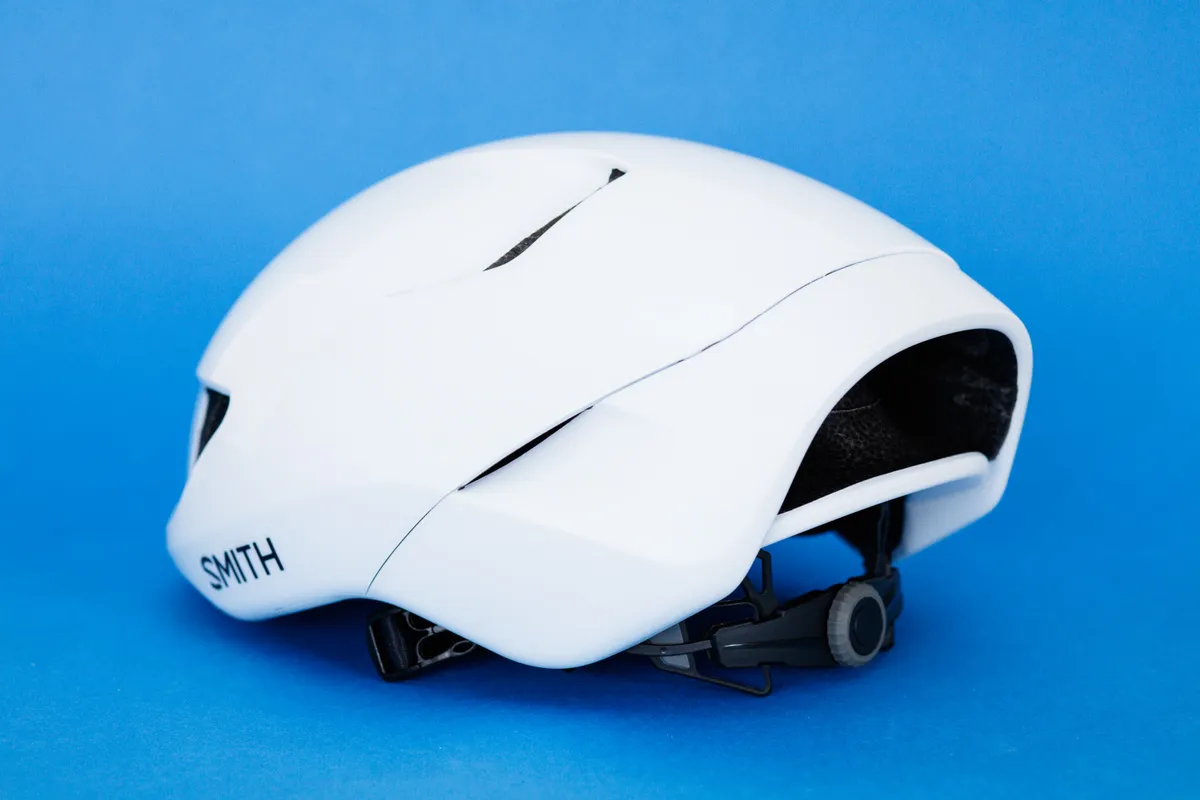
At the front of the helmet there are four prominent vents, while there are two smaller ones on top towards the rear.
The rear includes two small exhaust ports on the upper section of the outer shell, plus a large central one where the adjustment dial sits.
Though the middle two vents on the front of the helmet are fully open, those on the side are filled with Koroyd.
Koroyd is a material made from a series of plastic tubes welded together to form a honeycomb structure.
It’s intended to act as a crumple zone, reducing the force transferred to your head from any impacts.
Because of its highly open structure, Koroyd is lightweight and, theoretically, very breathable.
As we’ll come on to later, though, its application actually appears to hamper ventilation in this instance.

As already noted, the Ignite MIPS includes a MIPS liner to provide additional protection from rotational impacts to your head.
MIPS is something many of the best road bike helmets now include, and given it doesn’t impact on comfort, fit or performance here, it’s great to have it ‘just in case’.
The plastic outer shell also wraps around the outer edge of the helmet, preventing any damage to the EPS foam from general bumps and knocks. As well as looking neat, this bodes well for long-term durability.
Smith Optics Ignite MIPS helmet performance

On the head, the Ignite MIPS is very comfortable.
The fit of the cradle can be height adjusted in discrete steps, and tightened via a rotary dial on the rear. The low-profile chin strap also didn’t cause any irritation and goes about its job with minimal fuss.
I was able to quickly find a good fit with no pressure points, and it’s easy to make adjustments while riding, if required (even with thick winter gloves on).
In the absence of a wind tunnel, it’s impossible for me to determine its aerodynamic performance relative to other similar helmets.
However, its elongated shape and minimal venting certainly suggest it is well optimised in this regard (shape is typically a critical aspect in determining a helmet’s aerodynamic performance).
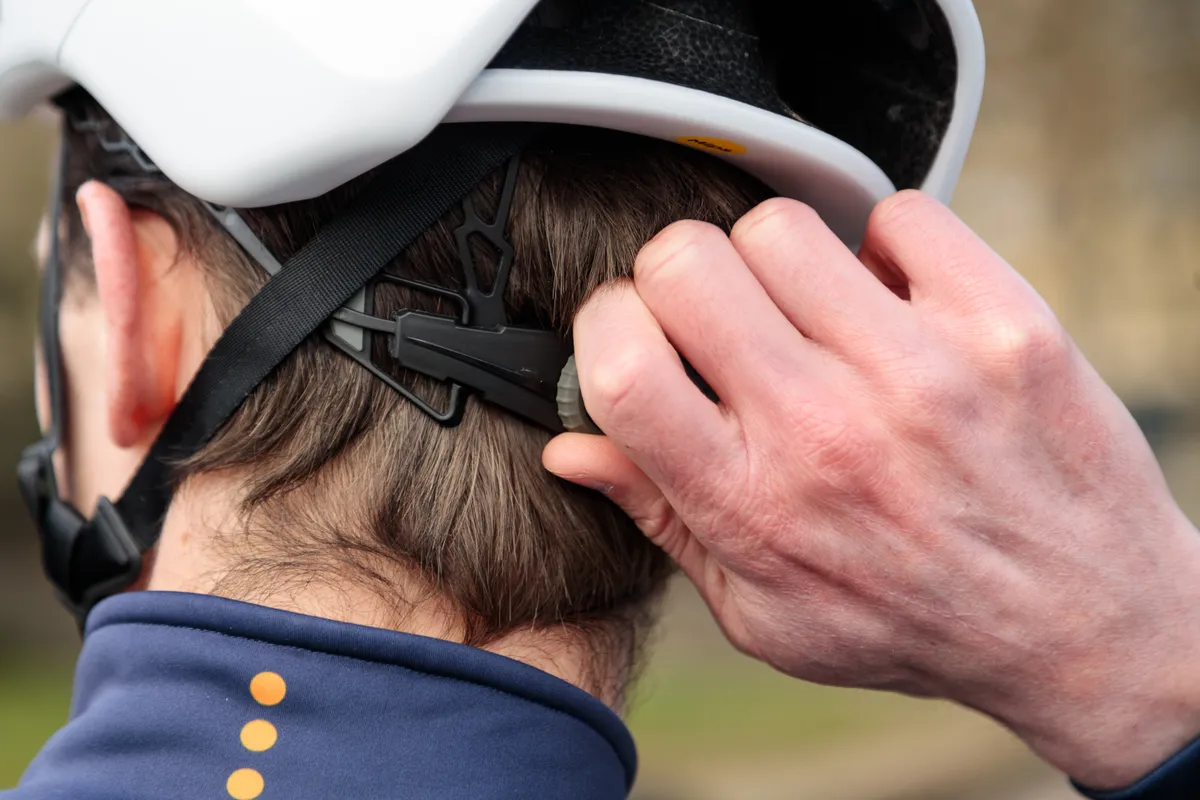
As is often the case with aero helmets, though, this results in a compromise where the minimal venting makes for less effective heat management.
In this case, the Ignite MIPS relies primarily on its four frontal vents to draw air in through the helmet, pass over your head, and exit through the large exhaust port at the rear, taking excess heat with it.
While the middle two vents do this in an unobstructed manner, the Koroyd filling the two side vents seems to hinder this.
The issue appears to be that though Koroyd is mostly holes, those holes aren’t angled effectively to allow unrestricted airflow. You don’t feel the wind rushing through them to the degree you’d expect simply from how large these two vents look.
As a result, the Ignite MIPS is a fairly hot helmet.

Though I typically feel the cold more than most, I found it comfortable to wear down to single figures (in degrees celsius) – territory that would normally have me wearing a cycling cap underneath a helmet.
On hotter days (such as during testing late last summer, in temperatures around the mid-20s), cooling is adequate while travelling at high speed on the flat. Things get a little uncomfortable while climbing at slow speeds, though, especially if you’re working hard.
With air not being forced through the two central front vents at speed, and the outer shell mostly closed, it’s noticeably stuffier than a more vented helmet, such as the HJC Ibex 2.0.
This wouldn’t be a helmet I’d reach for ahead of hot days on the bike with lots of climbing, then.
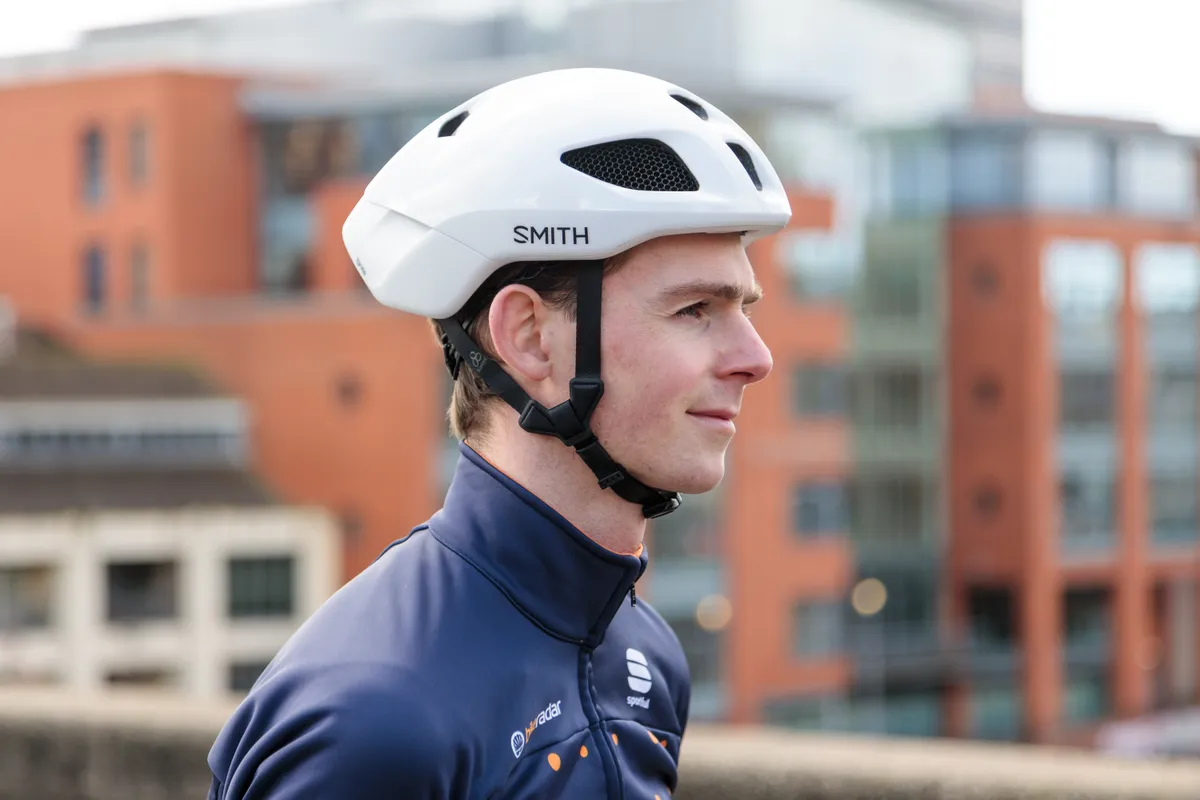
Considering it’s generally wet and cold in the UK for much of the year, some might view this as an advantage.
It does dent its versatility somewhat, though, especially for those who live or ride in warmer locations, or simply want one helmet to do it all.
As already noted, the Ignite MIPS isn’t the only aero road helmet to offer compromised ventilation, either. The Lazer Bullet and Rudy Project Nyron, for example, also leave a little to be desired in this area.
That said, our testers have praised both the Specialized Evade II and Giro Eclipse Spherical for their impressive ventilation and aerodynamic designs, for example, showing that the best aero road helmets can combine both characteristics effectively.
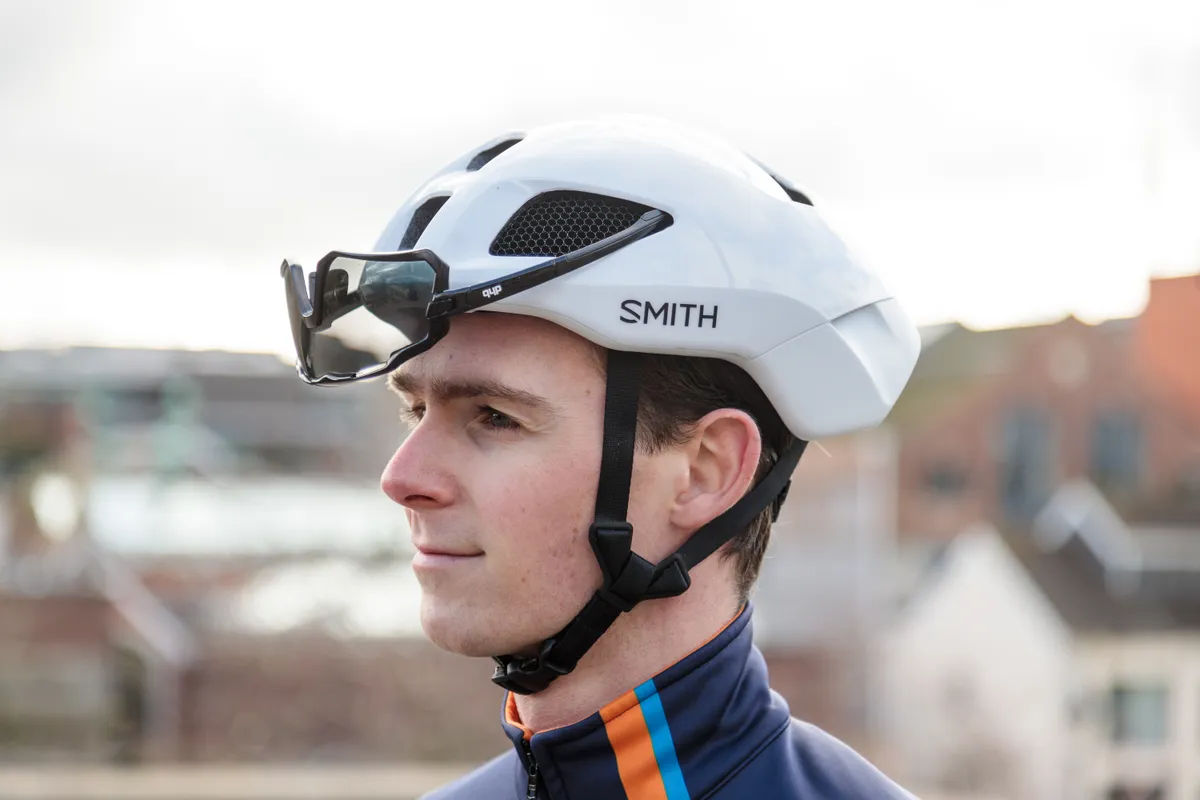
I also found the sunglasses storage port didn’t work with either my DHB Vector or 100% Speedcraft sunglasses.
Smith Optics’ own range of sunglasses are likely a better fit, but something more universal would have been appreciated.
Smith Optics Ignite MIPS helmet bottom line
The Smith Optics Ignite MIPS is a comfortable aero road helmet with a good array of safety features and competitive specs.
It offers generally impressive performance, but poor ventilation limits its versatility, especially for those who live in warmer climates or do lots of climbing.
However, if you’re only going to have one helmet, then something that can handle a wider range of conditions might be a better pick.
Product
| Brand | Smith_optics |
| Price | £229.00, $250.00 |
| Weight | 281g |
Features
| MIPS | yes |
| Helmet type | aero_road |
| Smart helmet | no |
| Features | Zonal Koroyd coverage |
